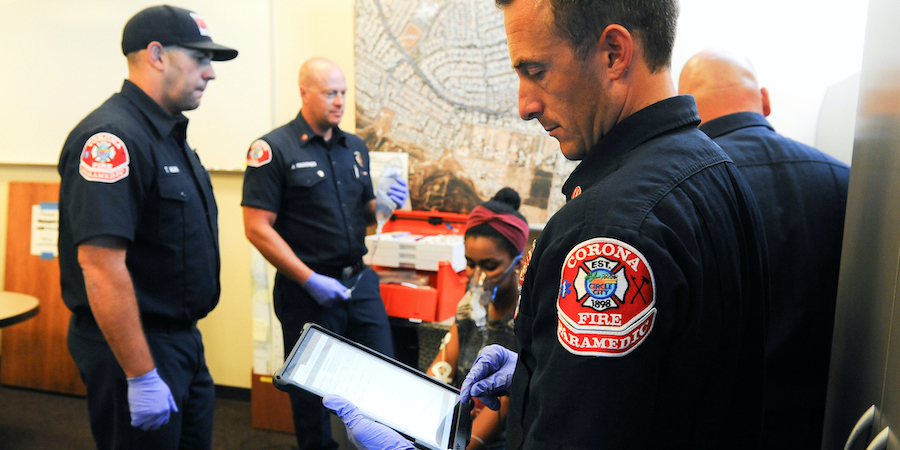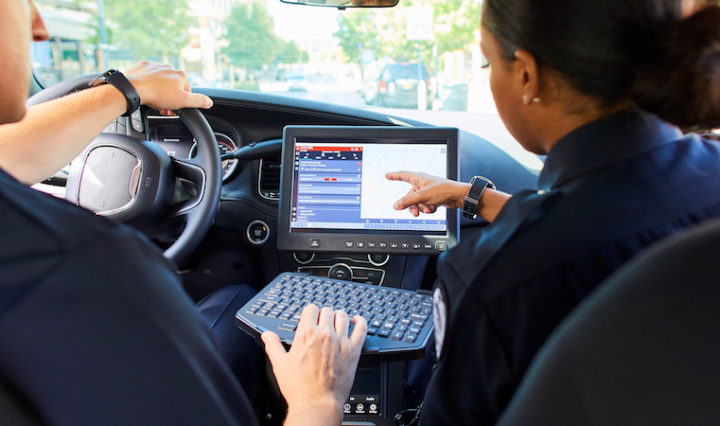Paramedics and emergency medical technicians (EMTs) are healthcare’s most mobile workers. Their exam rooms are wherever their patients are — at home, on the job or on the side of the road. But today, what little patient information EMTs have is usually stuck in a computer in their truck. What’s more, the information EMTs need to convey to care providers and national reporting repositories is stuck in their brains, at least until they have time for paperwork.
ImageTrend® thinks it shouldn’t be that way — not in the digital age, when tablets can do just about everything traditional PCs can, including running a robust electronic patient care reporting (ePCR) solution.
“ImageTrend saw a need in the market because so much documentation was happening on paper,” explains Janet Leean, vice president of marketing for ImageTrend. “We started looking at how we could help first responders better utilize prehospital data, send data directly to hospital systems and streamline their required reporting to state and federal repositories.”
ImageTrend launched its first ePCR solution in 2001. Since then, they’ve expanded their offerings, tailoring them for industry needs and added advanced analytics capabilities, including optimizing its solutions for mobile applications.
Why is mobility such an advantage for emergency medical services (EMS)? And what should agencies keep in mind as they adopt digital solutions?
The Mobile-Empowered Paramedic
Imagine this emergency scenario:
Two EMTs respond to a 911 call for a possible heart attack. Along the way, the passenger paramedic logs into ImageTrend Elite™ on her tablet. The solution is integrated with the city’s computer-aided dispatch (CAD) system, so the paramedic can see all the information from the dispatcher, including the patient’s name, location and complaint. Using Elite’s Repeat Patient functionality, the paramedic can also see information gathered during previous encounters, so she’s aware of the patient’s drug allergies, medical history, current medications and historical EKG readings.
How Much Can Going Mobile-First Save Your Agency?
Use our calculator to see how much you could save by leveraging Samsung DeX. Download Now
That’s fortunate, because the patient is incoherent when they arrive. They connect him to an EKG monitor and administer medication to stabilize his blood pressure and heart rate. As they work, they note everything in the patient’s record, which already contains data from the CAD system and the patient’s previous encounter. Meanwhile, the patient’s EKG data is streamed to the cloud and integrated into the ePCR.
When the paramedic completes the documentation, they are able to push their report to the local hospital’s electronic health records (EHR) system. Emergency room physicians are able to review this information — including EKG data. Once the EMTs complete the transfer, their “paperwork” is done, and they’re ready for the next call.
“For paramedics, being able to take a mobile device into the field and accurately provide data is important for patient care and outcomes,” says Kayla Schindle, implementation coordinator at ImageTrend. “It’s a high-stress job, and you don’t want to have to rely on your memory. We have medics on staff who used to write vitals on the back of their gloves. Now they have Elite’s Situation Tools™ that let them press one button to document that they gave epinephrine, performed CPR or placed a 12-lead. They can lay a tablet down next to them while performing patient care and, with the touch of their knuckle, document that they’re doing 15 different things. The system captures all that data and timestamps it so crews can finish the documentation after the emergent situation is over.”
Benefits of Mobile Data Reporting
ImageTrend’s EMS technology doesn’t just make it easier for paramedics to access and share data. It also streamlines data reporting, allows for advanced analytics and automates government compliance.
The Corona Fire Department uses ImageTrend’s EMS software and says the solution saves its EMTs 10 minutes per report. Now, they submit data immediately; it used to take them days to submit hard copies.
Once this information is in the platform, leaders can log in and view both trending and historical data, along with visual and predictive analytics that help them identify where there’s room for improvement and anticipate potential problems. With Continuum®, ImageTrend’s Active Data Monitoring™ solution, they can also easily spot current trends.
“Continuum is a near-real-time data monitoring solution that allows you to see what’s happening right now with maps and visual dashboards, and allows Monitors to be set to alert based on specific criteria,” says Leean. “For example, designated recipients would receive a text or email if the Monitor’s criteria were triggered. All those parameters are set up ahead of time, keeping it simple for administrators. Continuum constantly monitors data important to your agency.”
Security and Reliability: Key Considerations for Mobile EMS Technology
Mobile EMS solutions — including software, hardware and network connections — must be secure and reliable. Data breaches can compromise patient privacy and safety — and cost organizations millions of dollars. Likewise, if the software stops working when EMTs lose cellular connectivity or their devices are too slow or fragile for emergency field work, first responders will only be slowed down.
ImageTrend understands these concerns and has addressed them with best-in-class features and functionality. “We have designed our system around security and privacy,” says Leean. “Every user has their own login with set permissions and can only see what they’re supposed to see.”
Reliability isn’t an issue either, Schindle says: “While using Elite Field, if you would lose internet connectivity, the system keeps capturing the data being entered. When you regain an internet connection, the documentation process is seamless. For example, if you’re driving to the hospital and would lose internet connection, you can continue doing your job.”
Elite works on almost any tablet, though providers should make sure all devices are secure and reliable.
Samsung offers a wide portfolio of industry-leading mobile devices that are ideal for healthcare and public safety organizations, with fast processing speeds, long battery life and innovative features. All devices are secured by Samsung Knox, a defense-grade security platform that’s built into devices from the chip up.
EMTs often work in rough environments and inclement weather, and Samsung offers devices that are exceptionally durable — especially the new Galaxy Tab Active Pro. This rugged device is designed for field workers and has passed military specification MIL-STD-810G: It can withstand drops, shocks, vibrations, rain, dust, sand, high altitude, freezing/thawing and humidity. Enhanced touch functionality allows it to be used with wet or gloved hands. For enhanced security, the device also features an advanced fingerprint scanner and facial recognition.
Mobile is the future of healthcare. EMS organizations that’ve adopted secure, reliable solutions have a head start.
Discover more opportunities for mobile first responders to improve situational awareness and officer safety, or find out how much your agency could save by going mobile-first using our online cost calculator.








